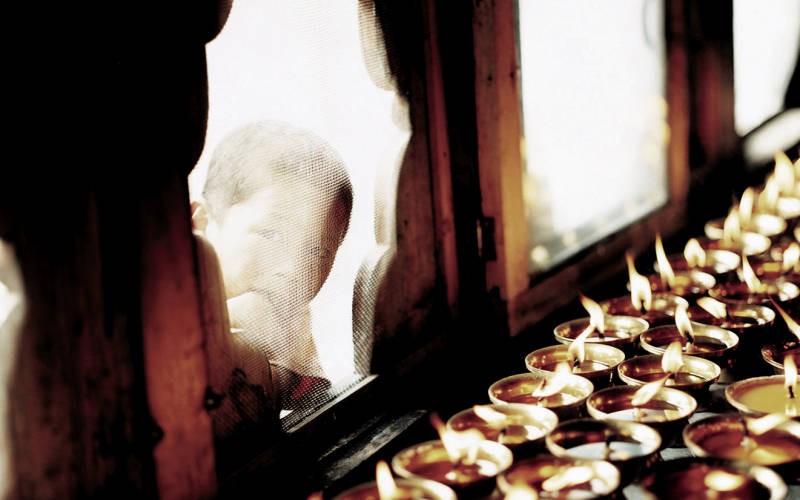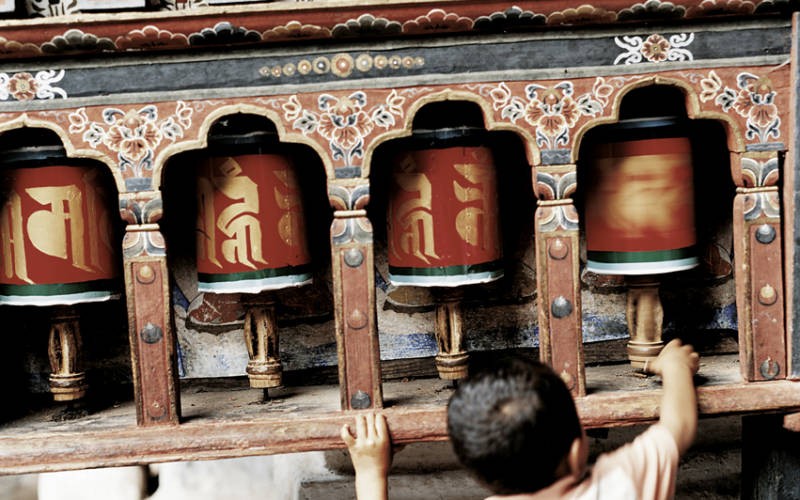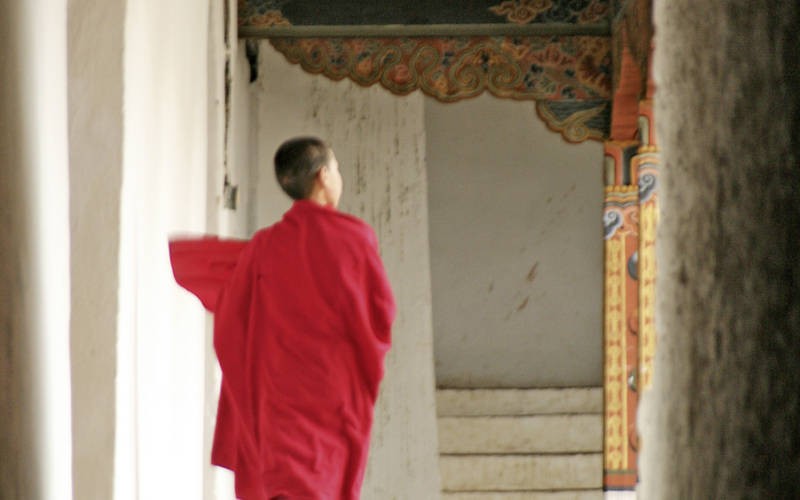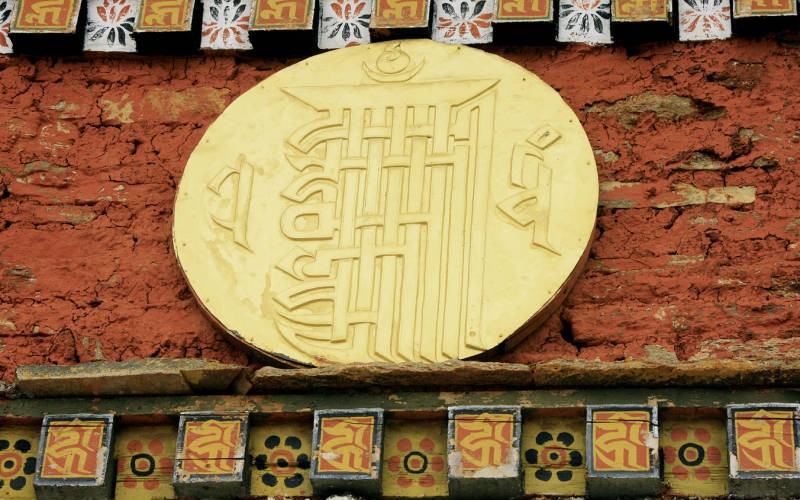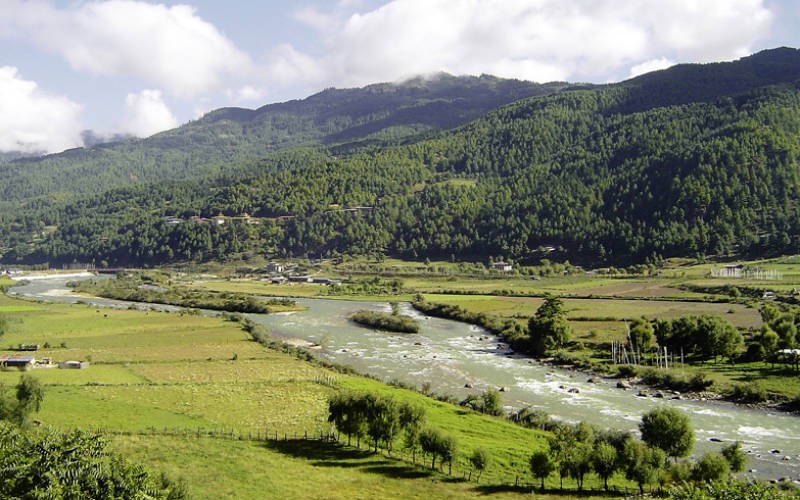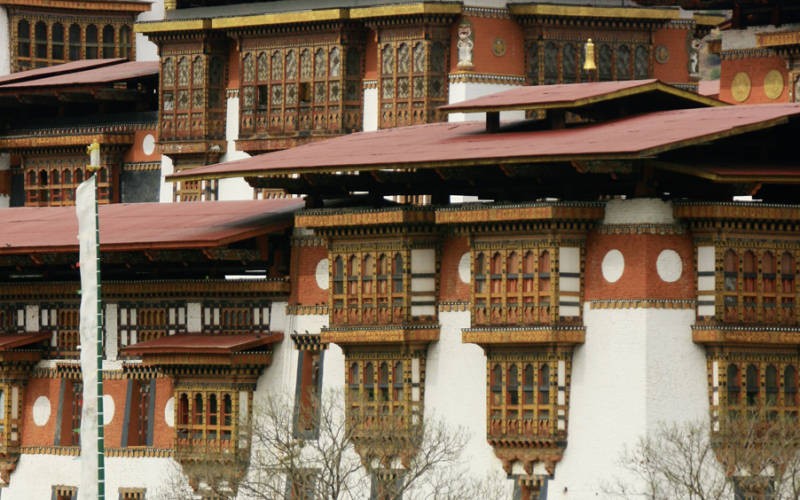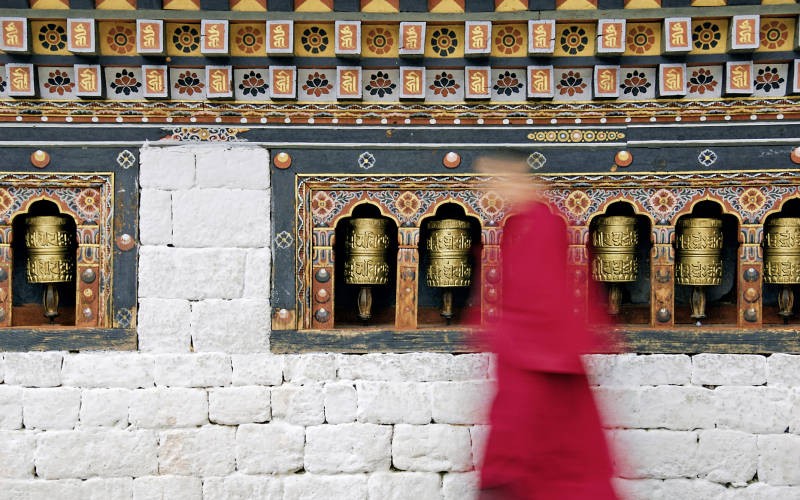
Bhutan
The mysterious kingdom of Bhutan is a carefully preserved tradition of Buddhism, dizzying landscapes of the Himalayas and a mass of ancient monasteries, stupas and monuments.
The last Shangri-la, the Land of Happy People, the Kingdom of the Thunder Dragon are just some of the poetic epithets that are used to describe Bhutan, a small state in the Himalayas that opened its doors to foreigners just over 30 years ago. Bhutan is distinguished from its neighbors India and Tibet by its almost complete isolation from the outside world until very recently, which makes it feel literally out of time and space when you find yourself here: Locals in colorful outfits walk sedately through the streets of the cities, Buddhist monasteries and dzongs, lost on the forested slopes of the Himalayas, are everywhere. Tourists in Bhutan are invited to enjoy amazing exoticism, visit Buddhist shrines, including unique rock fortress monasteries, climb the Himalayas, go rafting, and also feel the healing effects of Tibetan medicine. There are enough "fives" in the country with excellent spa centers.
Shopping
The main pride of the artisans of Bhutan is hand-made fabrics made of wool. Geometric ornaments and bright colors, obtained exclusively from natural dyes, are a real eye-catcher. Popular products are applications sewn on clothes, wall panels, tablecloths and mats. The material is called "yatra", and the country-famous craftswomen live in eastern Bhutan (although the products are sold throughout the country).
Wooden bowls "dappa" are analogues of Russian vessels, used for storing and transporting cooked food. They are sold in pairs, and the halves are almost hermetically docked. However, individually they can be widely used in the household.
It is also worth bringing bamboo baskets from Bhutan «banchun» — they also consist of two tightly closed halves. Banchuns are made in southern Bhutan, but are sold all over the country.
Among the trifling souvenirs are all kinds of figurines of dragons, the symbol of Bhutan, images of national symbols.
Kitchen
The impression of Bhutanese cuisine is often twofold. On the one hand, rice and a lot of natural products cereals, vegetables, dairy cheeses; on the other hand, the widespread and generous use of chili peppers, negating all the usefulness of "foot food" for European mouths not used to fires. Nevertheless, in tourist places, they got the hang of cooking, from the point of view of the Bhutanese, "fresh" food for the needs of the guests of the country. Most importantly, do not forget to clarify that you do not need pepper at all.
Lunch in Bhutan most often consists of vegetable, less often meat, stew cooked with chili pepper, accompanied by rice (here it is an indispensable side dish) and some kind of soft cheese or cottage cheese. Bhutanese rice is narrow, long and almost red. It is the only species capable of surviving in the highlands. Buckwheat and corn are also consumed, and in the Himalayas, wheat and potatoes are also consumed.
Popular dishes: «ema-datsi» — chili pepper pods stewed in cheese sauce with spices; «keva-datsi» — the same chili and cheese, but accompanied by potatoes, «shamu-datsy» — as you might guess, chili plus cheese and plus mushrooms. From «heavy» it is worth trying «phagsha-pa» — pork stewed with radish, «keva-phagsha» pork with potatoes and spices, «tshoy» Beef stewed with rice and mushrooms. Thin unleavened tortillas and fresh vegetables are always served with the main dishes.
It is customary to wash down the meal with black or green tea, wheat beer «chang » or «changi». Bhutanese tea is a very dense drink: salt, pepper and oil are added there. Well, from the strong one, it's worth trying rice or corn vodka "macaw".
Entertainment and attractions of Bhutan
The sights of Bhutan are a huge number of important Buddhist monasteries and temple complexes, historical monuments and the amazingly beautiful untouched nature of the Himalayas.
The main attraction of the capital Thimphu is the 350-year-old royal residence Fortress of the blessed religion. Now government offices are located here, and once the country's largest monastery for 2,000 monks worked. It is also worth seeing the memorial stupa of the third king of Bhutan, "chorten", not forgetting to give the father of the current ruler honors "in form" (as the guide will instruct), visit the National Library, where valuable Buddhist manuscripts are kept, look into the Tank School, where they teach how to create paintings on religious subjects and to see the process of making traditional paper from plant fibers using ancient Chinese technology. It is extremely durable and is purchased by Buddhist monasteries from different countries.
In Paro, you should definitely visit the amazing high-altitude monastery of the Tigress's Nest, the main Buddhist shrine of Bhutan. The monastery is located on a steep 900-meter cliff and includes seven temples, monastic huts and a waterfall. The Bhutan National Ta Dzong Museum, housed in an ancient tower, the Queen Mother's Palace, the large monasteries of Paro Dzong and Rinchen Pung Dzong ("Fortress on the Mountain of Jewels") and others are also interesting here. The best samples of the tank are kept in the Chelila Convent.
Jakar in central Bhutan is the spiritual heart of the country. Located among four valleys, it boasts an impressive number of Buddhist temples with ancient relics, pilgrimage sites and fortified fortresses-temples «dzong». The circumference of one of the largest dzongs in Jakarta is more than one and a half kilometers.
The Sakten Valley is the place of residence of the ancient nomadic tribes-pastoralists of Bhutan, who still speak their own language and have not changed the age-old way of life. And it is also here that the mythical "yeti" lives. — bigfoot. The tracking route of the same name laid here takes about 30 days and is considered one of the most difficult in the world.
Bhutan has 10 protected areas, covering more than a quarter of the total area of the country. Nature lovers are guaranteed to be enchanted by the Bomdeling and Khaling National Parks. The former is home to more than 100 species of mammals, including snow leopards, Himalayan bears and Bengal tigers, as well as about 250 species of breeding and migratory birds. Elephants and dwarf pigs live in the humid tropical forests of Khaling.
Tracking
Tracking is a distinctive feature of Bhutan as a tourist destination. The gentle and steep slopes of the Himalayas, interspersed with spacious valleys with picturesque lakes and full-flowing rivers, make it possible to build a route of any complexity from one-two-day crossings to beginners to tracks of monthly duration. The most popular route is the Druk from Paro to Thimphu (65 km), which takes 6 days, during which forests of blue fir trees are replaced by high-altitude passes and sparkling lakes with villages, dzongs and monasteries scattered everywhere. Beginners can be advised to take a simple three-day Bumtang route along valleys and rivers with a lot of ancient temples on the way. The six-day track "Thousand Lakes", whose name speaks for itself, and the route around the sacred mountain of Jomolkhari (according to legend, the Thunder Dragon that gave the country its name lives there), running at an altitude of 2500 m, are also popular.
Bhutan events
A series of colorful festivals accompany the lives of Bhutanese throughout the year. There are at least two dozen of them. Among the most colorful are the Thimphu and Paro festivals, as well as the Tsechu Festival held in monasteries and dzongs of the country at different times. It is dedicated to the birthday of Guru Rinpoche, has been held annually since the 8th century and consists of festive processions and blessings by lamas of believers.
It is also definitely worth seeing archery competitions in the national sport of Bhutan. They are regularly held at any level, from the village to the all-Bhutan. The main competition takes place during the celebration of the Bhutanese New Year, Losara. The prices on the page are for January 2017.
Why do members choose us?
Quality over quantity is our ethos.
Exclusivity Through Invitation
We don't cater to masses, we curate an exclusive community of travelers by invitation only. Our club fosters a close-knit group, ensuring personalized attention and a sense of belonging for every member.
Personalized Service, Tailored Experiences
Your journey is our priority. We delve deep into your preferences to curate bespoke travel experiences. By working closely with our select members, we craft tailored itineraries and provide exceptional service, ensuring every trip is uniquely yours.
Members' Rates, High-Quality Service
We prioritize relationships over transactions to secure competitive rates for our members. Leveraging our club's connections and expertise, we provide exclusive deals and perks that consistently meet high-quality standards.
Join us and experience travel redefined — a club where exclusivity meets personalized service.
